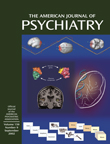Alzheimer’s Disease and Related Disorders Annual 2001
The pace of research in Alzheimer’s disease is accelerating. Particularly on the basic science front, each day there are reports that seem to bring new insights and challenges to our understanding of not only what Alzheimer’s disease is but how the brain works. With this breakneck pace, how can one keep up? The editors of this work offer one answer, an annual that seeks to “bridge basic sciences and clinical practice in the realm of dementia.” Although this would seem to be a fairly daunting task, the editors have largely succeeded in this goal by assembling a slim, focused review of 10 key subjects in Alzheimer’s disease research.
The first two chapters address amyloid processing in Alzheimer’s disease and cerebral amyloid angiopathy, two critical and quickly evolving basic science topics. In both cases, the authors are able to provide an update in our understanding of the basic science of these areas while maintaining a link to clinical practice. The remaining eight chapters address clinical topics that weave together clinical and basic science data where possible. Chapters are devoted to the clinical use of neuroimaging in evaluating dementia and clinical trials in mild cognitive impairment. Several chapters focus on treatment of the cognitive and behavioral symptoms of Alzheimer’s disease. These chapters address the role of muscarinic agonists, depression in dementia, depression in other neurodegenerative disorders, and the use of antipsychotic drugs. Final chapters on assessing patient competency and management of late-stage dementia complete the work.
I found the chapter on management of patients with severe dementia particularly valuable. This is a group of patients for whom many geriatric psychiatrists have less direct responsibility, since it is a stage of the illness during which our general medical colleagues often provide direct care. However, it is essential to stay current in this area so we can best advise our patients, their families, and our physician colleagues. The last decade has seen a shift away from the use of invasive procedures to supply nutrition and hydration to patients with advanced dementia as the lack of benefit of these well-meant interventions has been recognized. We need to continue the struggle to understand how best to provide comfort and dignified care to these patients and their families as they work through their “long goodbye.”
This is a very nicely made book printed on high-quality paper with excellent illustrations. Overall the writing is clear and accessible, and there is minimal content overlap among the chapters. Although the book is too focused to serve as an introduction to Alzheimer’s disease, it will be of value to anyone with an interest in dementia and is written at a level to be appreciated by those new to the field as well as those who work in it.



